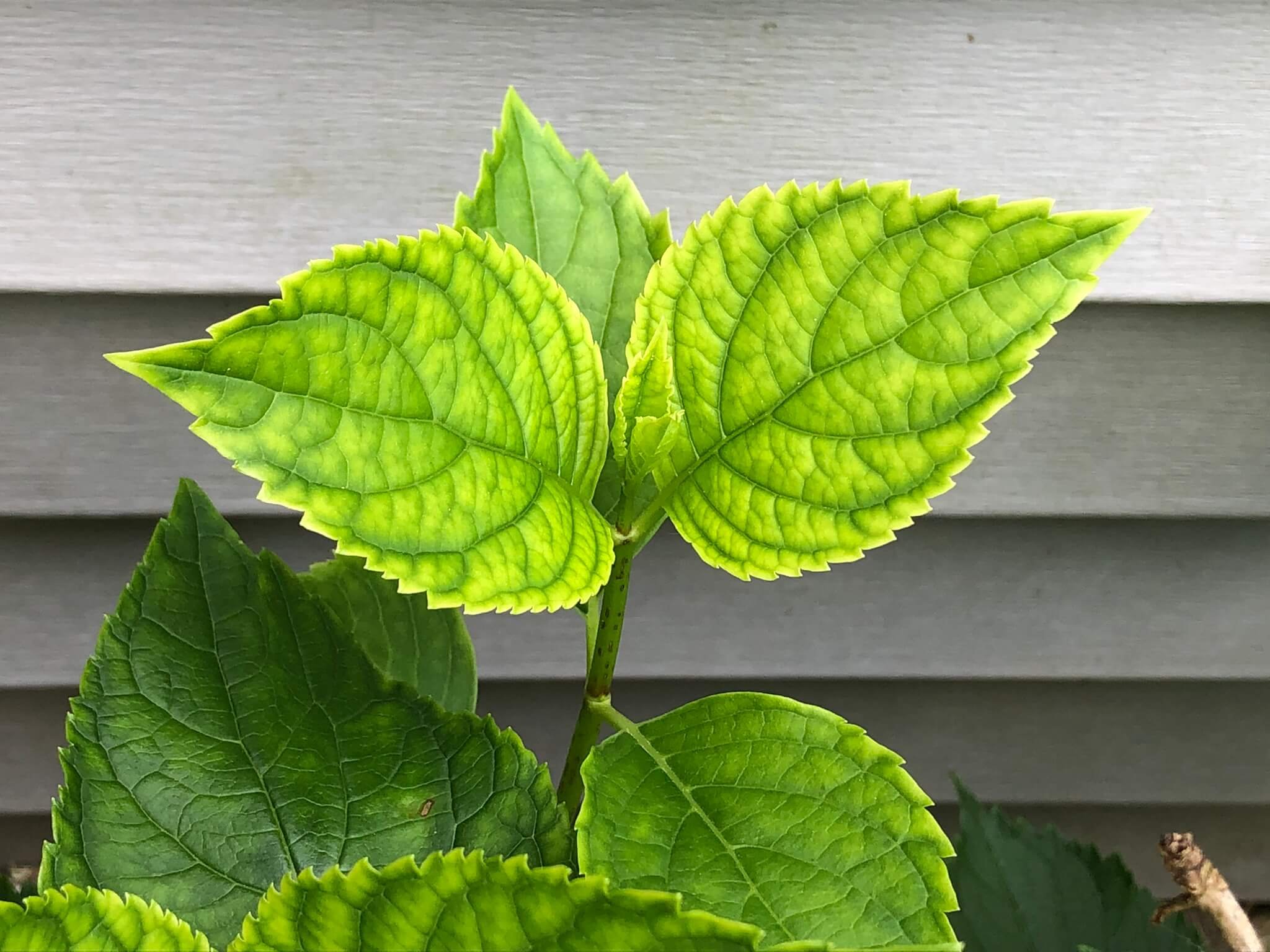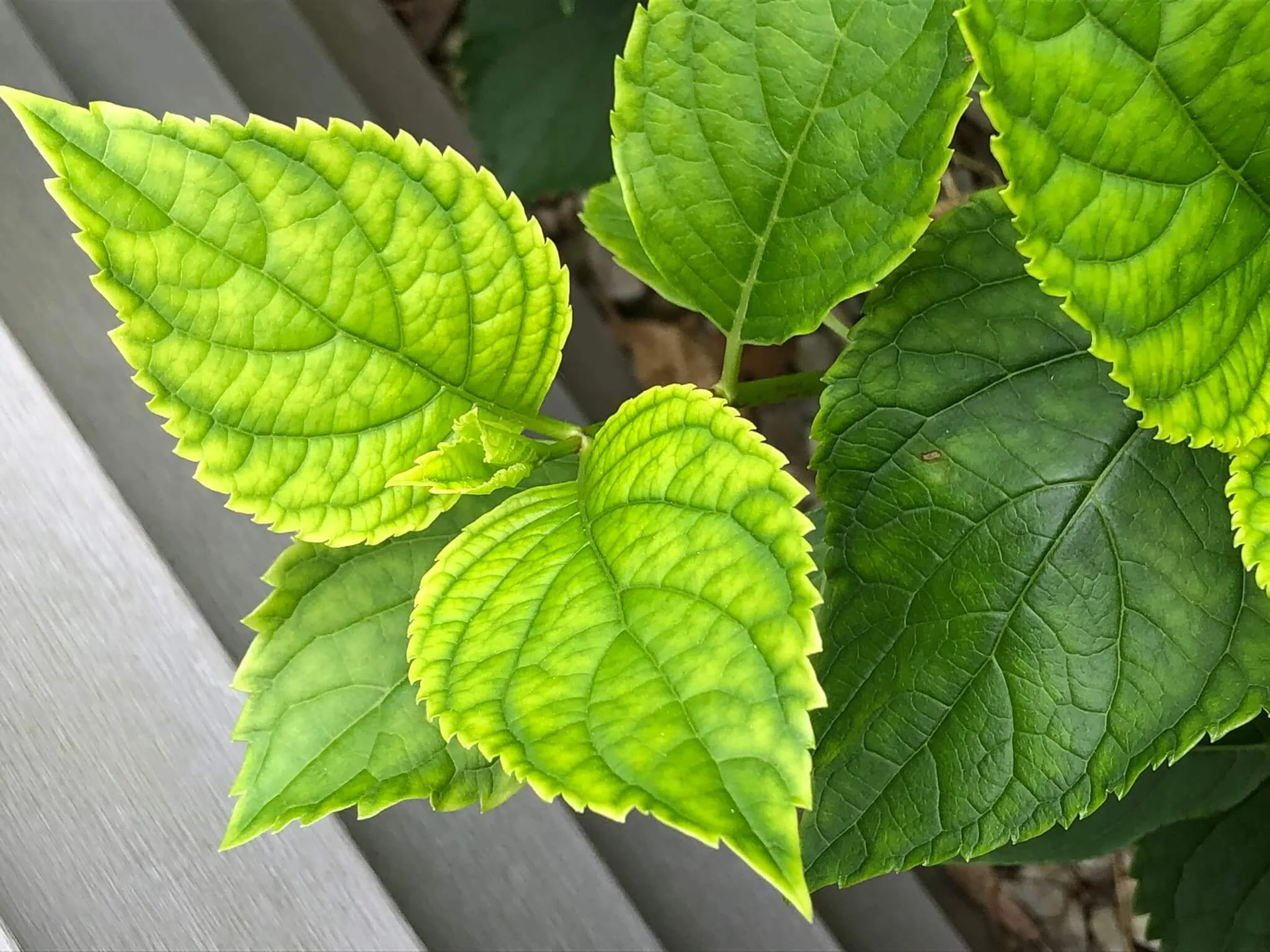6 Reasons Your Hydrangea Leaves Are Turning Yellow And How To Fix It
How to fix yellow hydrangea leaves
If you're like most gardeners, you love the sight of a healthy hydrangea bush covered in beautiful blooms. But if you've started to notice that your hydrangea leaves are turning yellow, you may be wondering what's wrong and how to fix it.
The reasons for hydrangea leaves turning yellow include:
Deficiencies in the soil
Diseases that affect hydrangea plants
Watering problems
Wrong lighting conditions
Sudden temperature changes
Issues with the soil pH
I'll go through each cause of yellowing hydrangea leaves in depth below. Once you have identified the reason behind your yellow hydrangea leaves, you can fix them and enjoy beautiful blooms all season!
The items listed are accompanied by affiliate links, meaning I earn a small commission if a purchase is made through my links. This has no impact on the cost to the consumer. I link to products this way whenever possible, and it has no bearing on the products I choose to review or recommend.
What Makes Hydrangea Leaves Turn Yellow?
Deficiencies
Hydrangeas are a beautiful addition to any garden, but they can be finicky plants. One of the most common problems that gardeners face is that their hydrangeas fail to bloom. There are a number of possible causes for this, but one of the most common is a lack of nutrients.
Hydrangeas are heavy feeders and need a steady supply of nutrients in order to flower. Plants need nutrients to survive and thrive, so if your soil is depleted, it can lead to problems like yellow leaves. If you see yellowing leaves on your hydrangeas, it's important to check the soil and make sure that the plant is getting enough nutrients.
To fix soil deficiencies, you'll need to amend the soil with compost or other organic matter. To determine if your soil is the problem, test the pH and nutrient levels in early spring. You can buy a soil test kit so you know exactly what your hydrangea needs.
There are several specific nutrient deficiencies including iron, nitrogen, and magnesium that can cause hydrangea leaves to turn yellow. Let's go into detail about each one.
Iron Deficiency
Iron deficiency is common in hydrangeas and can cause the leaves to turn yellow. A sign that your hydrangea is suffering from an iron deficiency is if the new leaves are yellow while the veins remain green. This is called "chlorosis" and it's a sure sign that your plant needs more iron. Iron chlorosis is often caused by a lack of chlorophyll, which is needed for photosynthesis. This is probably one of the most common reasons for hydrangea with yellow leaves but it is very easy to rectify!
The best way to treat an iron deficiency is by adding chelated iron to the soil. You can also try using an organic fertilizer that's high in iron. Be sure to follow the instructions on the package so you don't overdo it and end up with too much iron in the soil.
Nitrogen Deficiency
Another common nutrient deficiency in hydrangeas is nitrogen. Nitrogen is essential for plant growth, so a lack of it can cause hydrangea leaves to turn yellow and stunt the plant's growth. If the older leaves are turning yellow-green on the entire leaf, it's an indicator of a nitrogen deficiency.
To fix a nitrogen deficiency, you can add compost or manure to the soil. You want to be careful because if you add too much nitrogen then you will have foliage but few or no blooms. And the beauty of hydrangeas is in their big, beautiful blooms!
Magnesium Deficiency
Magnesium is another nutrient that's essential for plant growth. A magnesium deficiency will cause the leaves to turn yellow between the veins while the veins remain green. This is called "interveinal chlorosis".
To treat a magnesium deficiency, you can add magnesium sulfate to the soil. Follow the manufacturer's suggested dosage, which is usually 2 teaspoons per gallon of water.
By doing a soil test, you can figure out what is lacking in your soil so it can be amended.
Diseases That Affect Hydrangea Plants
There are several diseases that can cause hydrangea leaves to turn yellow. These include root rot, hydrangea mosaic virus, and tomato ringspot virus.
Rot Root
Root rot is a fungal disease that affects the roots of the plant. This can happen if the plant is overwatered or if the soil drains poorly. The first sign of root rot is usually yellowing leaves.
If you suspect your plant has root rot, it's important to act quickly. Remove the affected plant from the soil and dispose of it. Then, amend the soil with compost or other organic matter.
This hydrangea disease can definitely be avoided if you provide the right environment for your plant.
Hydrangea Mosaic Virus
Hydrangea mosaic virus is another disease that can cause hydrangea leaves to turn yellow. This virus causes the leaves to turn yellow and mottled. The best way to prevent this disease is to sanitize your tools after working.
Tomato Ringspot Virus
Tomato ringspot virus is another disease that can cause hydrangea leaves to turn yellow. This virus is spread by nematodes and it causes the leaves to turn yellow and distorted.
The best way to prevent this disease is to control the nematode population. You can do this by using an insecticide or by planting companion plants that attract predators of nematodes.
RELATED: Hydrangea Cane Borer: A Harmful Invader; How to Treat it
A panicle hydrangea with yellow leaves.
Yellow leaves on my hydrangea shrub.
Watering Problems
Watering problems can cause a hydrangea with yellow leaves. Too much or too little water can cause hydrangea leaves to turn yellow.
Overwatering
If you're overwatering your plant, the roots will suffocate and the leaves will turn yellow. Hydrangeas like their roots to be moist but not wet. They also need well-draining soil otherwise the roots will sit in water and rot.
If you think you're overwatering your plant, let the soil dry out before watering again. Be sure to check the soil before watering to make sure it's dry. If the soil is dry, water deeply and wait for the water to soak in before watering again.
To prevent overwatering, water your plant deeply but less frequently.
Underwatering
If you're underwatering your hydrangea plant, the leaves will turn yellow, wilt, and droop. This is a sign that the plant is stressed and needs more water.
The best way to water your hydrangea plant is to water it deeply but less frequently. This will allow the roots to grow deep and strong.
Wrong Lighting Conditions
The amount of sunlight your plant gets can also cause hydrangea leaves to turn yellow. Hydrangeas prefer partial sun. If the plant is in too much sun, the leaves will turn yellow due to leaf scorch.
While hydrangeas don't like direct sunlight, they also don't do well in dark spaces.
To fix this problem, move your plant to a location that gets partial sunlight throughout the day (ideally 6 hours). A great spot might be in your garden that gets afternoon sun so the plant can stay cool and shady in the morning.
A nice healthy hydrangea with green leaves and a flower bud.
Sudden Temperature Changes
Sudden temperature changes can also cause hydrangea leaves to turn yellow. Hydrangeas do not like drafts, winds, or cold temperatures. If the plant is in a drafty or windy location, the leaves will turn yellow.
To fix this problem, move your hydrangea to a more protected location. A great spot might be near a building or house where it can get protection from the wind.
If you have a potted hydrangea, bring it inside during the winter months. This will protect it from the cold weather and drafts.
Issues With The Soil's pH
The pH level of the soil can also affect hydrangea leaves. Hydrangeas prefer acidic soils with a pH level of 5.5-6.5. So make sure you test your soil before planting a hydrangea.
If the soil is too alkaline, the leaves will turn yellow. To fix this problem, you can amend the soil with a solution of citric acid and water.
It is important to fertilize your hydrangea every year since the soil's nutrients can be depleted over time. This will keep the soil healthy and the plant will be less likely to experience problems.
RELATED: Perfect Partners: Stunning Hydrangea Companion Plants for a Vibrant Garden
Pin for later!
How To Prevent Hydrangea Leaves From Turning Yellow?
Prevention is always the best cure when it comes to yellow leaves on hydrangeas. Here are some tips that will help you prevent your hydrangea leaves from turning yellow:
Choose a Location With Partial Sunlight
A lot of hydrangea's success comes from choosing the right location. They don't like too much sun or too little sun.
The perfect amount of sun for hydrangea is partial sunlight which provides around six hours of sunlight per day. It also needs to have acidic soil that is well-draining as hydrangeas don't like to be soggy.
Water Deeply But Infrequently
Hydrangeas need to be watered deeply but infrequently to prevent yellow leaves. Watering deeply allows the roots to grow deep and strong. It also prevents the plant from being waterlogged which can lead to yellow leaves.
Fertilize Every Year
Fertilizing your hydrangea every year is important as it replenishes the nutrients in the soil that can be depleted over time. This will keep your plant healthy and prevent yellow leaves.
In fact, hydrangea plants need to be fed regularly during their growing season to encourage budding and flowering. Giving your hydrangeas a nutrient boost is critical for them to perform their best.
Here is the fertilizer I use when I feed my hydrangeas.
FAQS About Hydrangea Leaves
How to save overwatered hydrangea?
The first step is to stop watering the plant immediately. Then, check the drainage of the pot and make sure that it is draining properly. If not, repot the plant in a pot with better drainage. Next, water the plant deeply but less frequently to prevent overwatering in the future.
Should you cut off yellow leaves?
Yes, you should cut off the yellow leaves as they are not serving any purpose. The plant will also be able to focus its energy on the green leaves which are helping it photosynthesize.
How should you apply fertilizer when the hydrangea leaves are yellow?
Fertilizer should be applied evenly around the base of the plant, taking care not to get any on the leaves. Apply fertilizer at the rate recommended on the package for the size of your plant. Water deeply after applying fertilizer to help it reach the roots. Repeat this process every month during the growing season.
Summing Up Why Hydrangea Leaves Turn Yellow
There are many reasons why hydrangea leaves turn yellow. It could be due to nutrient deficiencies, diseases, watering issues, wrong lighting conditions, sudden temperature changes, or issues with the soil's pH. Thankfully, there are ways to fix these problems. By following the tips above, you can prevent your hydrangea leaves from turning yellow. Hydrangeas are beautiful plants that deserve to be healthy and thrive. With a little care, you can ensure that your hydrangea leaves stay green all season long.

















